Diabetes is a data-driven disease, with patients suddenly finding themselves inundated with information that they need to measure, monitor and record to stay healthy. But in an age of algorithms that could lighten the load, diabetes care still largely relies on patients manually keeping track of everything themselves. The One Drop system is designed to let people manage their diabetes through an integrated app, smart meter and supplies service. New Atlas spoke to the company's founder, Jeffrey Dachis, to find out how it works.
At a glance, One Drop seems like what you'd expect diabetes care to be like in the modern day. It includes a lancet device to draw blood, a glucose meter that sends test results to a smartphone via Bluetooth, and an app that ties everything together. Users can sync information from fitness trackers, monitor their data over time, and easily share it with their doctor.
But as obvious as it sounds, this kind of modern data management system hadn't been applied to diabetes care before. Patients are generally expected to jot down their readings, or at best, enter them manually into an app. Managing the condition requires a lot of legwork, but time isn't the only thing diabetes drains from a person: as Dachis found out firsthand, it takes a massive mental toll that many doctors all but ignore.
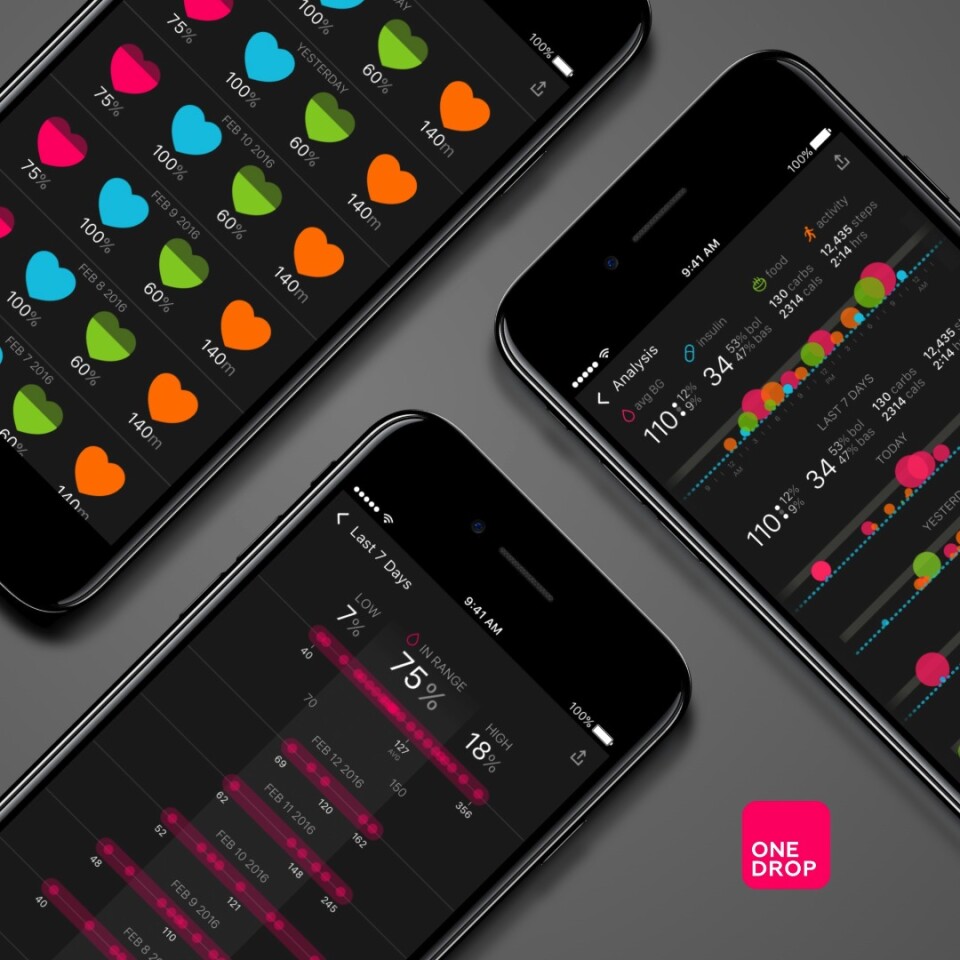
Jeff's Diagnosis
In 2013, Jeff Dachis had been feeling under the weather for a while when he finally took himself to the doctor. He'd lost 20 lb (9 kg) in less than eight weeks, he was constantly tired and found he just couldn't quench his thirst, no matter how much water he drank. Although he didn't recognize them, those are key symptoms of a form of type 1 diabetes called Latent Autoimmune Diabetes of Adulthood (LADA).
Being diagnosed with diabetes is a life-changing moment for anybody, but in Jeff's case he was only given six minutes with a nurse practitioner, who gave him an insulin pen and a prescription, then sent him out the door.
"I was terrified," Dachis tells us. "I was afraid for my family, I was feeling very alone. Who do I talk to about this disease?"
Although he felt alone, Jeff was far from it. He's one of almost 30 million Americans living with diabetes, and over 420 million people worldwide. Claiming a life every six seconds, the condition is one of the leading causes of death, and it's among the world's most expensive healthcare problems, costing US$825 billion globally every year. But the main problem, according to Dachis, is that the modern healthcare system treats that last figure like the most important one.
"We've seen over 40 new diabetes pharma treatments introduced to the market in the last 15 years," says Dachis. "We've seen $1 trillion in profits added to pharma devices and hospital companies' balance sheets. We've seen $850 billion distributed back to shareholders of those companies."
Despite all of that attention, there's been zero improvement for patients.
"Nothing has been done to help the individual with diabetes," he says. "Why? Because you cannot treat 500 million people with diabetes effectively in the current system. You have to empower 500 million people with diabetes to treat themselves."

"Fat, lazy disease"
Enter One Drop. Dachis likens the company to the Uber or Airbnb of healthcare, giving people easy access to their own data to help them make the best decisions for their own health and overcome this lonely, fearful, disempowering experience.
To work out how to tackle the problem, the One Drop team started by interviewing hundreds of people with diabetes to better understand their experiences and most pressing needs. The first thing that jumped out at them was the negative emotions associated with diabetes. To many people, Dachis says, it's considered the "fat, lazy disease," so being diagnosed comes with an unhealthy side of shame. Then there's the stress of tracking and monitoring all your food, exercise and glucose information, and remembering medication and appointments. It's exhausting.
"This system is so disempowering to the person with diabetes that we started looking at this and saying 'wow, this is really about disempowerment, this is really about shame, depression'," says Dachis. "This is really a user experience problem, not a medical problem. There's all this complex, psychosocial stuff going on with this diabetes condition that has nothing to do with the medical industry."
It was clear that the best way to help people was to try to reduce that mental load. The first port of call is the One Drop Chrome, a sleek, silvery glucose monitoring system that automatically sends a user's blood sugar measurements to a smartphone via Bluetooth.
Combating the social stigma attached to diabetes begins with the physical design of the hardware. Elegant and eye-catching, the glucose meter and lancet device are made to look like high-end accessories that wouldn't seem out of place in a Marc Jacobs catalog. The idea, Dachis tells us, was to tackle the feeling of shame by creating a device that you wouldn't feel self-conscious about pulling out in public.
But of course, the main way the Chrome helps is by giving people easy access to their own data. The results of each blood test are sent straight to the user's phone and collected by the One Drop app, which acts as the hub of the whole system.
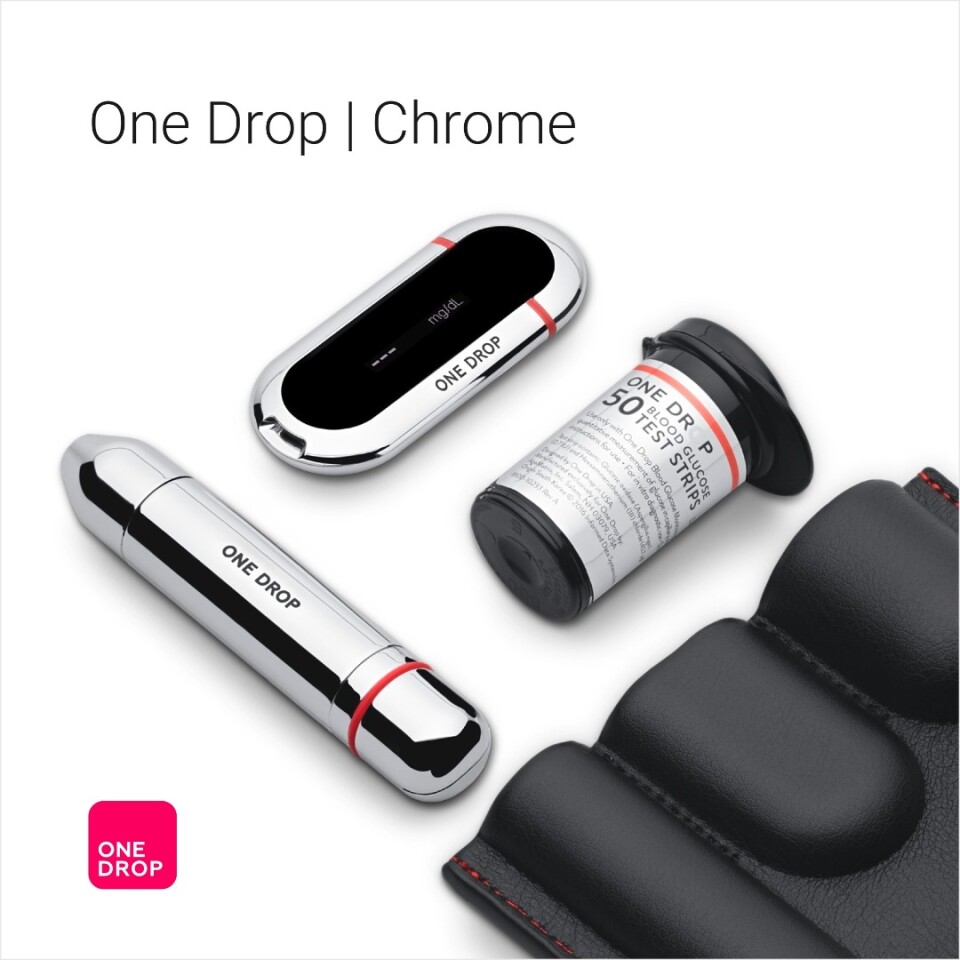
Data vs. diabetes
Glucose information may be the key metric that diabetes patients need to manage, but physical activity, food and medication all play a big part in staying healthy. The One Drop app rounds up all of these stats and presents them on daily, weekly and monthly scales, and to cap it off, it can remind you to take your meds.
Exercise data can be synced straight from fitness trackers like the Apple Watch or Fitbit, and the nutritional value of your meals can be tracked thanks to a huge food database. Dachis says the system will consult local food libraries in over 20 countries, so you can count the carbs of millions of items in grocery stores or restaurant chains by scanning barcodes, or manually entering details.
"We automatically count carbohydrates, which is the number one problem associated with diabetes that leads to all the medical problems," says Dachis. "Because hypoglycemia and hyperglycemia are both derivatives of mistakes in counting carbs, giving people the ability to accurately track and count carbs gives them the ability to accurately dose their insulin."
As useful as that data is for a patient's personal use, doctors can make good use of it too. Through the app, users can choose to share their information with their doctors rather than go into a clinic for a checkup. On the other side of the equation, it allows doctors to keep track of many patients at once, which ends up saving everybody's time.
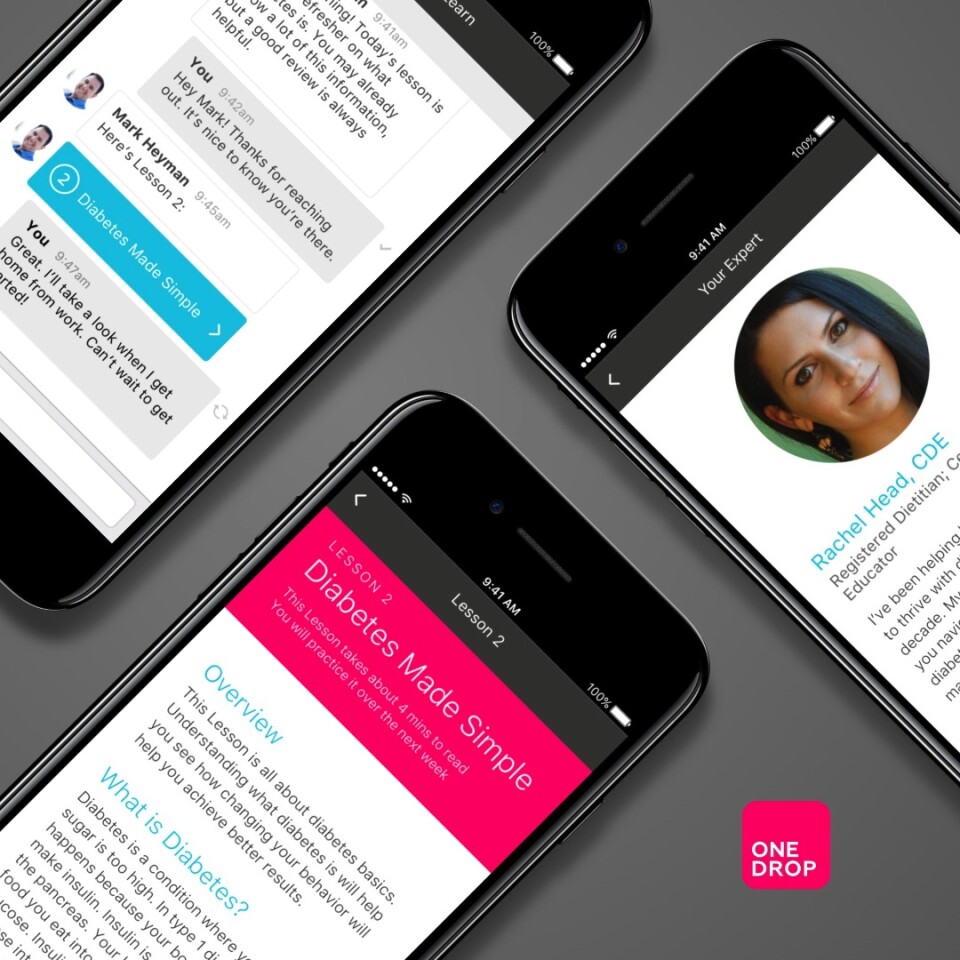
These medical professionals aren't just watching from the wings either. Newly diagnosed patients tend to have a lot of questions, and consulting Doctor Google is rarely a good idea. Along with a program that outlines the basics about how to manage diabetes, the One Drop app lets users chat with an actual human who knows what they're talking about.
"You'd be shocked that people with diabetes don't know how to count carbs, or they don't even know what calories are," Dachis explains. "People with diabetes get diagnosed and thrown into the wolves. Say I have some questions, or I'm struggling. I'm having issues with stress and sleep – does that affect my diabetes? Or I'm going mountain climbing, does altitude affect my diabetes? Instead of taking work off to go to the doctor, I just open up my phone."
While a response is guaranteed within 12 hours, Dachis says it's usually only a matter of minutes. That's thanks to having professionals across the US, Europe and the Middle East, with more to come as the service rolls out in other regions.
All in this together
So far, One Drop has tackled the disempowerment and shame surrounding diabetes, but there's one last mental hurdle to overcome: isolation. And to give patients a leg-up in that regard, the option is there for them to share their data with other users. It's all anonymized of course, but One Drop members can see some of the stats of other nearby users, like their glucose readings, which meds they're taking, which exercises they're doing, and what foods they're eating.
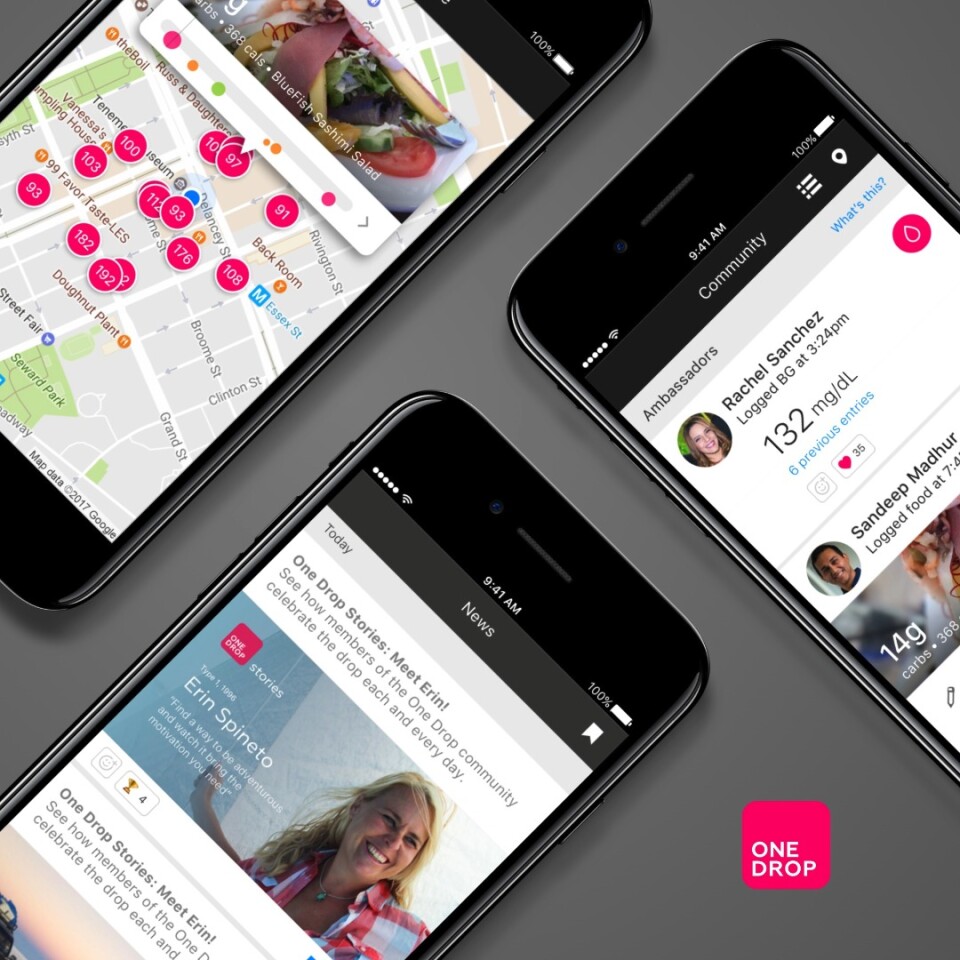
Diabetes might sound like a strange thing to build a social media platform around, but it can fill a gap that people might not be able to find in their own lives. It can be useful to swap experiences, recipes, exercise routines and any other tips, but most importantly, it helps people with diabetes see that they're not fighting through this on their own.
"We like to say we're all in this together," says Dachis. "That data and information that we're sharing with each other helps me feel less alone. I feel less isolated. I feel less disempowered, because I can see other people are challenged and struggling – or succeeding. And how can I learn and grow with them and from them? That's a lot of support that you get right in the One Drop community."
Testing, testing
Having this kind of audience to share your data with has another advantage: it encourages people to test their blood sugar more often. How often a diabetic person needs to check will vary depending on their health, but generally those with type 1 will probably be testing between four and eight times a day, while type 2 sufferers may only need to twice a day or less.
As with any chore, it's only human to forget or not feel like it sometimes, but as Dachis says, "you can't manage what you don't measure." The One Drop system is designed to get people testing more regularly, but the problem is, the more often you test, the faster you'll burn through your supply of test strips, the disposable active components of the glucose meter that reacts with the blood.
In the UK, Australia, Canada and other countries, patients with diabetes are able to get some test strips for free, but there's a limit to how many. Meanwhile, in the US healthcare system, diabetes supplies require a co-payment of 20 percent, which can really add up.
"My co-pays for test strips alone were US$90 a month," says Dachis. "And then I had the co-pay on insulin, a co-pay on thyroid medication and I had a co-pay for doctors' visits. So all in, when you're adding up what I have to come out of pocket for, you're talking about several thousand dollars a year for diabetes supplies. And just testing and regular doctor visits was still almost $1,200 a year."

Relieving that pressure on the back pocket was another goal for Dachis, so One Drop allows users to sign up for a monthly subscription service that delivers test strips to their door, in packs of either 50, 100, or as many as needed. The unlimited package costs $40 per month, making it far cheaper than going through healthcare, even if you're insured.
With all of these different parts of One Drop working together, Dachis says that the system is having a clear impact on its users. The main measure of diabetic health is a person's A1C rating, or their average blood glucose level over time. Anything less than 4.5 percent is considered non-diabetic, but people with diabetes can hit an A1C of 10 percent, or even higher. For the average One Drop user, this figure will fall by about one percent over two months according to Dachis.
"This isn't a condition that we don't know the answers to," says Dachis. "It's very clear what you need to do to stay healthy, and you will live a very long, unaffected, completely healthy life if you do those things. And yet we're seeing a person die every six seconds. So, why?"
Next Drop
The short-term goal of One Drop is to bring the system to different regions. Currently, the app is available worldwide on iOS and Android devices, and it's presented in English, Spanish, Arabic and traditional and Mandarin Chinese. The experts program is accessible worldwide, but currently only available in English, while the hardware and subscription services are available throughout the US, UK and Europe.
The next step is to roll out the full suite of services and hardware to Australia, Canada and the United Arab Emirates, with Dachis saying One Drop should be in Australia by the end of the year. But a longer term possibility is to adapt this versatile system to help people cope with other chronic illnesses.
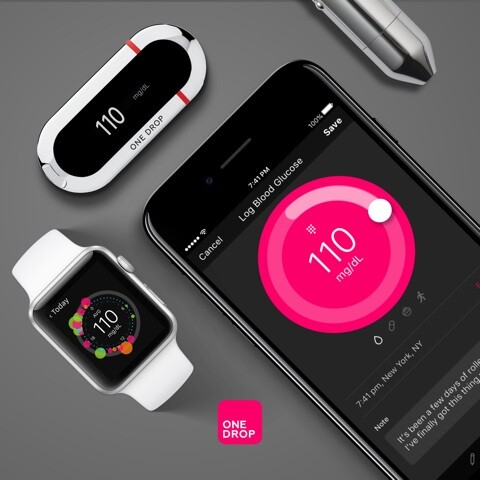
"We are big data-, machine learning- and algorithm-centric in our DNA here," says Dachis. "We have over 400 million health data points that we've collected, and we can use all this data to really help our users make better choices. And we think that the same methodology and format – connected devices, mobile computing and big data-driven insights and actionability – can be deployed initially for diabetes, then the next generation for chronic conditions that are adjacent to diabetes, like hypertension, hyperlipids and heart disease. And then looking more broadly across other chronic conditions."
More information: One Drop



















